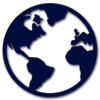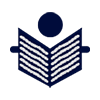
Only Regulatory Products (API/FDF), Drugs in Developments and News are Updated on this Virtual Booth
Update your Virtual Booth on PharmaCompass, ask us ![]()
About
CPhI North America CPhI North America
Not Confirmed
Not Confirmed
20-22 May, 2025
German Wound CongressGerman Wound Congress
Not Confirmed
Not Confirmed
07 April-09 May, 2025
Not Confirmed
Not Confirmed
08 April-11 May, 2025
List your booth number for exhibitions, ask us
CONTACT DETAILS




Upload your Marketing & Sales content on your company Virtual Booth, click HERE.
Events
Webinars & Exhibitions
CPhI North America CPhI North America
Industry Trade Show
Not Confirmed
20-22 May, 2025
German Wound CongressGerman Wound Congress
Industry Trade Show
Not Confirmed
07 April-09 May, 2025
Industry Trade Show
Not Confirmed
08 April-11 May, 2025
Digital content

INTERVIEW #SpeakPharma
[Sponsored by another company]https://www.pharmacompass.com/speak-pharma/our-unmatched-efficiency-and-track-record-of-faster-dmf-filings-give-our-customers-a-critical-competitive-advantage
VLOG #PharmaReel
[Sponsored by another company]DATA COMPILATION #PharmaFlow
[Sponsored by another company]https://www.pharmacompass.com/radio-compass-blog/cdmo-activity-tracker-axplora-enhances-adc-capacities-quotient-beefs-up-hpapi-capabilities-evonik-euroapi-forge-deals

15 Apr 2025
// REUTERS
https://www.reuters.com/business/healthcare-pharmaceuticals/eli-lillys-mounjaro-launch-india-ignites-wave-weight-loss-enquiries-2025-04-14/

07 Apr 2025
// ECONOMICTIMES
https://economictimes.indiatimes.com/industry/healthcare/biotech/pharmaceuticals/novo-nordisk-readies-to-bring-weight-loss-drug-wegovy-to-india/articleshow/120044198.cms

07 Apr 2025
// FDA
https://www.accessdata.fda.gov/scripts/cder/daf/index.cfm?event=overview.process&ApplNo=125477

07 Apr 2025
// PR NEWSWIRE
https://www.prnewswire.com/news-releases/mission-biocapital-announces-2024-platinum-ticket-investments-and-opening-of-4-million-2025-platinum-program-contest-302421769.html

03 Apr 2025
// BUSINESSWIRE
https://www.businesswire.com/news/home/20250403023818/en/Sangamo-Therapeutics-Announces-Capsid-License-Agreement-With-Lilly-to-Deliver-Genomic-Medicines-for-Diseases-of-the-Central-Nervous-System

01 Apr 2025
// REUTERS
https://www.reuters.com/business/healthcare-pharmaceuticals/experimental-lilly-drug-cuts-genetic-heart-disease-risk-factor-by-94-trial-2025-03-30/
Excipients
Inspections and registrations

ABOUT THIS PAGE
Eli Lilly is a supplier offers 70 products (APIs, Excipients or Intermediates).
Find a price of Azaperone bulk with CEP offered by Eli Lilly
Find a price of Caninsulin bulk offered by Eli Lilly
Find a price of Enilconazole bulk with CEP offered by Eli Lilly
Find a price of Gemcitabine bulk with CEP offered by Eli Lilly
Find a price of Insulin (Human) Recombinant bulk with JDMF offered by Eli Lilly
Find a price of Insulin Lispro bulk with JDMF offered by Eli Lilly
Find a price of Olanzapine bulk with JDMF offered by Eli Lilly
Find a price of Vincristine Sulfate bulk with CEP offered by Eli Lilly
Find a price of Acetohexamide bulk offered by Eli Lilly
Find a price of Almitrine bulk offered by Eli Lilly
Find a price of Aspirin bulk offered by Eli Lilly
Find a price of Capreomycin bulk offered by Eli Lilly
Find a price of Cefaclor bulk offered by Eli Lilly
Find a price of Cefalotin sodium Sterile bulk offered by Eli Lilly
Find a price of Cefamandole Nafate bulk offered by Eli Lilly
Find a price of Cefamandole Sodium Salt bulk offered by Eli Lilly
Find a price of Cefuroxime Sodium bulk offered by Eli Lilly
Find a price of Cephalexin bulk offered by Eli Lilly
Find a price of Cephalexin Hydrochloride bulk offered by Eli Lilly
Find a price of Cephalexin Monohydrate bulk offered by Eli Lilly
Find a price of Chlormadinone Acetate bulk offered by Eli Lilly
Find a price of Chymotrypsin bulk offered by Eli Lilly
Find a price of Cinoxacin bulk offered by Eli Lilly
Find a price of Closantel Sodium bulk offered by Eli Lilly
Find a price of Cycloserine bulk offered by Eli Lilly
Find a price of Dantrolene bulk offered by Eli Lilly
Find a price of Diclazuril bulk offered by Eli Lilly
Find a price of Diethylstilbestrol bulk offered by Eli Lilly
Find a price of Erythromycin bulk offered by Eli Lilly
Find a price of Erythromycin Estolate bulk offered by Eli Lilly
Find a price of Fenoprofen Calcium bulk offered by Eli Lilly
Find a price of Fluoxetine Hydrochloride bulk offered by Eli Lilly
Find a price of H-Arg-Pro-Pna bulk offered by Eli Lilly
Find a price of Methadone Hydrochloride bulk offered by Eli Lilly
Find a price of Nitroglycerin bulk offered by Eli Lilly
Find a price of Nizatidine bulk offered by Eli Lilly
Find a price of Paracetamol bulk offered by Eli Lilly
Find a price of Penicillin G Procaine bulk offered by Eli Lilly
Find a price of Penicillin V Potassium bulk offered by Eli Lilly
Find a price of Sodium Thiosulfate bulk offered by Eli Lilly
Find a price of Tobramycin bulk offered by Eli Lilly
Find a price of Tobramycin Sulfate bulk offered by Eli Lilly
Find a price of Trypsin bulk offered by Eli Lilly
Find a price of Tylosin bulk offered by Eli Lilly
Find a price of Vancomycin Hydrochloride bulk offered by Eli Lilly
Find a price of MYRISTYL - 3 - HYDROXYBUTYLAMINE HCL - COMPOUND 06537 bulk offered by Eli Lilly
Find a price of TOPICAL ANESTHETIC COMPOUND C-10 bulk offered by Eli Lilly
Find a price of AMPOULES SODIUM THIOCYANATE, INJECTION COMPOUND #23206 bulk offered by Eli Lilly
Find a price of VORTEL TABLETS bulk offered by Eli Lilly
Find a price of 1 - CYCLOPPENTYL - 2 - AMINO PROPANE bulk offered by Eli Lilly
Find a price of RECOMBINANT PORCINE CARBOXYPEPTIDASE B (RCPB) bulk offered by Eli Lilly
Find a price of RS-1280 RESIDUALS IN LAYING CHICKENS (VET) bulk offered by Eli Lilly
Find a price of ROTOWEIGH (TM) CAPSULE WEIGHING MACHINE AT USED IN THE INDIANAPOLIS PL bulk offered by Eli Lilly
Find a price of CHLORDIETHYLNOL (DIETHYL CHLORO ETHYNYL CARBINOL) bulk offered by Eli Lilly
Find a price of MDX-068 (HUMANIZED ANTI-B-AMYLOID MONOCLONAL ANTIBODY) bulk offered by Eli Lilly
Find a price of IMIDAZOLIUM BROMIDE DERIVATIVE bulk offered by Eli Lilly
Find a price of Abemaciclib bulk offered by Eli Lilly
Find a price of Atomoxetin Hydrochloride bulk offered by Eli Lilly
Find a price of Baricitinib bulk offered by Eli Lilly
Find a price of Imlunestrant bulk offered by Eli Lilly
Find a price of Lasmiditan bulk offered by Eli Lilly
Find a price of Olanzapine Pamoate bulk offered by Eli Lilly
Find a price of Olanzapine Tartrate bulk offered by Eli Lilly
Find a price of Pemetrexed Disodium bulk offered by Eli Lilly
Find a price of Pirtobrutinib bulk offered by Eli Lilly
Find a price of Raloxifene Hydrochloride bulk offered by Eli Lilly
Find a price of Selpercatinib bulk offered by Eli Lilly
Find a price of Tadalafil bulk offered by Eli Lilly
Find a price of Tirzepatide bulk offered by Eli Lilly
Find a price of Abemasiclip bulk offered by Eli Lilly
